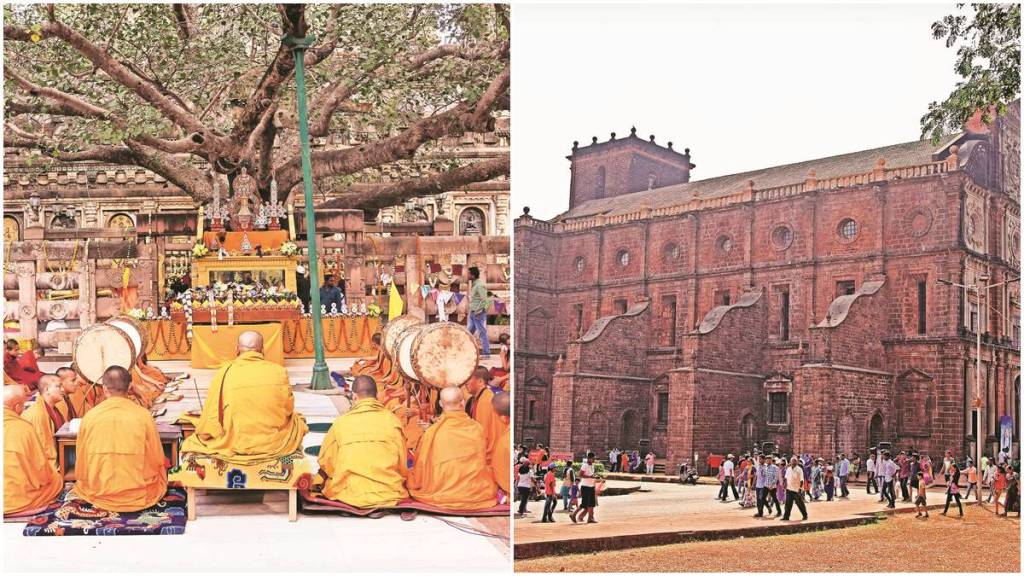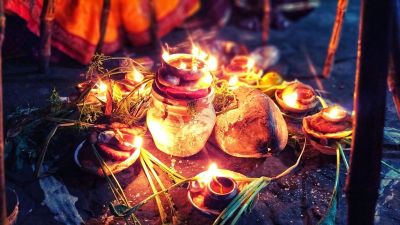How about going on a trail of the sacred footsteps of Lord Buddha and the important places of his life and teachings in Bihar, or paying a visit to some of the holiest shrines of Jainism situated across Maharashtra, some even dating back to several centuries? How about immersing yourself in the spirituality of Golden Temple in Amritsar, Punjab, the most sacred of Sikh shrines and a Unesco World Heritage Site, or taking a tour of Jama Masjid in Delhi, one of the largest mosques in the country and a symbol of Mughal architectural splendour?
There’s a rush among people to throng tourism sites with strong historical and cultural significance that extends across faiths, and the various stakeholders concerned are taking adequate steps to cash in on the trend. The Uttar Pradesh government, for instance, is developing a ‘Buddhist Circuit’ to propagate the historical, cultural and spiritual ties of Buddhism and attract Buddhist pilgrims from India and abroad in large numbers. At the recently held Bodhi Yatra conclave in New Delhi, the state department of tourism made a presentation to highlight six prominent Buddhist heritage sites—Kapilvastu, Sarnath, Shravasti, Kaushambi, Kushinagar and Sankisa. In attendance were delegates from several countries with Buddhist cultural ties such as Singapore, Thailand, Myanmar, Bhutan, Japan, Indonesia, Argentina, Mongolia, Sri Lanka and Vietnam, who also praised the government’s efforts in this regard.
“We wanted to reveal the spiritual and cultural connection with different countries in South Asia and Southeast Asia and improve cultural diplomacy with the support of the ministry of external affairs and promote foreign direct investment in the state. We have already allotted 2 acres of land in Varanasi to the Bhutanese government for the construction of temples and guesthouses,” said Mukesh Kumar Meshram, principal secretary, tourism and culture, UP, at the event.
A total of 205 projects have been outlined in the six Buddhist sites of UP worth Rs. 590.40 billion. At present, the maximum investment is focused in Sarnath (Rs. 549.92 billion) and Kaushambi (`33.09 billion).
The UP government is banking on airport and rail connectivity and hospitality infrastructure in these six Buddhist sites to boost tourism and seek investments. With over 30 hospitality infrastructures by prominent players that include Radisson Blu, Park Inn, Marriott and Sarovar Portico, and connectivity of international airports in Varanasi, Lucknow and Ayodhya, domestic airports in Gorakhpur, Kushinagar, Prayagraj and Agra, and adjoining railways stations, these sites will be buzzing with a lot of activity in the times to come.
“The Government of India, in collaboration with the government of Uttar Pradesh, aims to not only create a memorable experience for the Buddhist pilgrims but also ensure the development and better employment opportunities for local communities. We are also keen to enhance the infrastructure and amenities of Buddhist museums in the state as they are a living source of history,” said V Vidyavati, secretary, ministry of tourism, UP, at the event.
Madhya Pradesh, too, is developing a Buddhist circuit that will link significant centres like Sanchi and Bihar’s Bodh Gaya. Speaking on the untapped potential of the Buddhist pilgrimage route, tourism and culture minister Gajendra Singh Shekhawat said at the Bodhi Yatra conclave that only 0.005% of the global population who follow Buddhism visit the Buddha circuit destinations in India at present. “If we collectively enhance our efforts and increase this figure to 0.05%, we could welcome over 2.3 million visitors annually,” he added.
The Buddhist Circuit in UP is part of 12 mega tourism circuits of the state that also include the Sufi Kabir Circuit and Jain Circuit. While the Sufi Kabir Circuit is proposed to be extended from Amethi, Magahar and Sant Kabir Nagar to Kabirdas’ Karmabhoomi Lahartara in Varanasi, the Jain Circuit has been planned to be extended from Deogarh and Hastinapur to Parshwanath, Digambar Jain Temple and Ramnagar. Last year, Maharashtra, too, launched a ‘Holy Jain Tirth Circuit’ connecting important Jain sites in the state.
Earlier this year, Prime Minister Narendra Modi inaugurated an integrated developmental project of the Hazratbal Muslim shrine in Jammu and Kashmir as part of the slew of projects under the Swadesh Darshan and PRASHAD schemes. Last year, the government of Kerala allocated a sum of `93.8 lakh to launch a microsite on ‘Islam in Kerala’, a promotional digital production tracing the roots of Islam in Kerala, to woo both international and domestic tourists.
Robust surge
According to travel agencies, religious tourism in India has seen an uptick because of the government’s efforts to strengthen connectivity and infrastructure in religious sites, which they say, have led to strong demand across segments in India.
“We are seeing a surge in travel inquiries for spiritual places like Char Dham, Ayodhya, Jyotirlinga, Varanasi, Mahakaleshwar, Omkareshwara, Dwarka, Somnath, Mallikarjuna, Rameswaram, Ramayan Trail in Sri Lanka, etc,” says Rajeev Kale, president and country head, holidays, MICE, visa, Thomas Cook (India).
Ram Temple in Ayodhya has been primarily credited with boosting this growing interest in spiritual tourism. “Spiritual tourism has become increasingly popular among Indians. Ayodhya, with the inauguration of the Ram Mandir, fuelled a surge in spiritual tourism. There is a robust uptick (5x y-o-y) in demand for pilgrimage tours to Ayodhya and other locales,” says Daniel D’Souza, president and country head, holidays, SOTC Travel.
Nishant Pitti, CEO and co-founder of EaseMyTrip, concurs that spiritual tourism is booming in India, attracting both domestic and international tourists. As per estimates, the sector is expected to generate revenue of $59 billion by 2028, creating 140 million temporary and permanent jobs by 2030.
Every site associated with a religious faith has its own importance and popularity, says Pitti of EaseMyTrip, adding that all such sites usually have a high tourist footfall, which can vary due to dynamics like ongoing events and upcoming festivals.
“Prominent pilgrimage sites, including Vaishno Devi in Jammu, Golden Temple in Amritsar, Tirumala’s Balaji Temple in Andhra Pradesh and Jama Masjid in Delhi, receive thousands of visitors daily,” adds Pitti.









